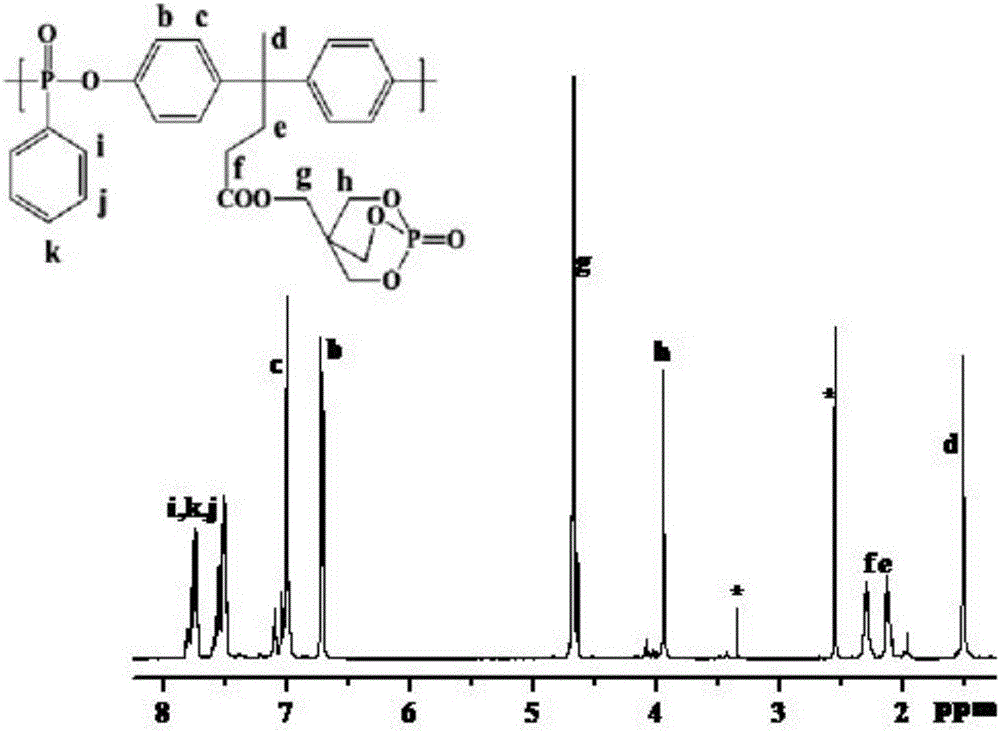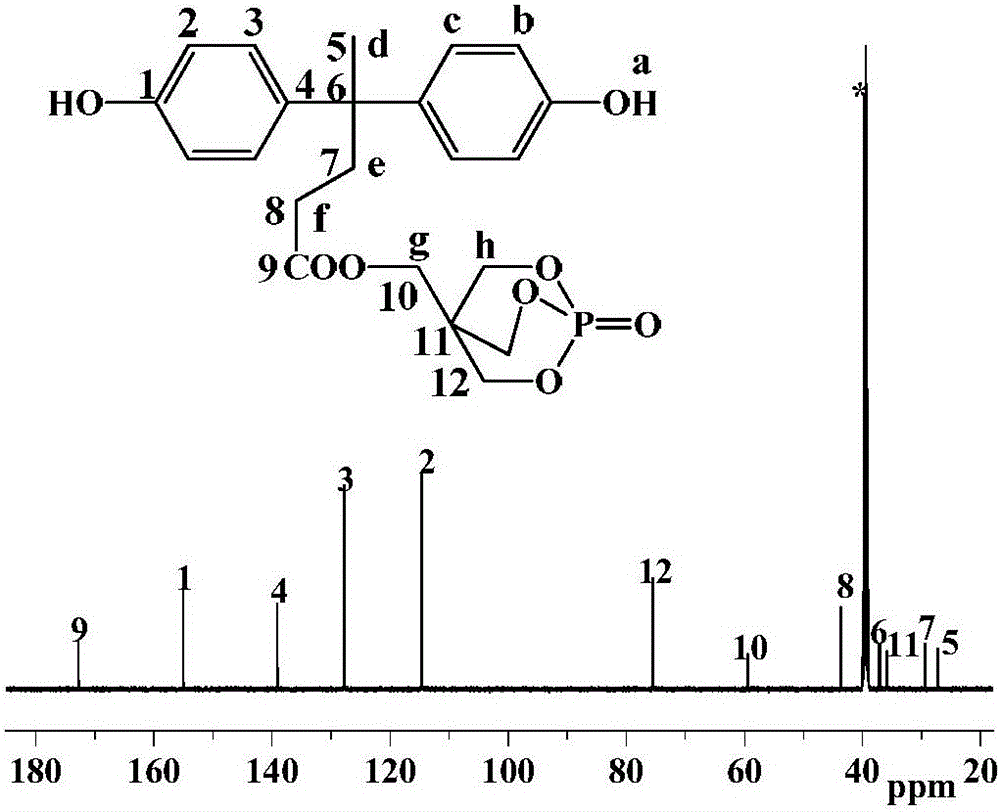High-efficiency polyphosphate ester fire retardant and preparation method thereof
A technology of polyphosphate ester and flame retardant, which is applied in the field of polyphosphate ester and its preparation, can solve the problems of material mechanical properties and processing performance damage, low decomposition temperature, and low flame retardant efficiency, and achieve easy processing and recycling, and easy preparation The method is simple and the effect of high decomposition temperature
- Summary
- Abstract
- Description
- Claims
- Application Information
AI Technical Summary
Problems solved by technology
Method used
Image
Examples
Embodiment 1
[0031] Add 28.6 g of bisphenolic acid (DPA; 4,4-bis(4-hydroxyphenyl)pentanoic acid, CAS No. 126-00-1) and 1-oxyphospha-4-hydroxymethyl into a 250 mL three-necked flask -18.0g of 2,6,7-trioxabicyclo[2.2.2]octane (PEPA), 1.92g of p-toluenesulfonic acid, 100ml of anhydrous acetonitrile, nitrogen protection, reflux reaction under mechanical stirring for 20 hours. During this period, part of the azeotrope of acetonitrile and water was evaporated three times, and then a corresponding volume of acetonitrile was added to obtain a purple transparent solution. The solvent was removed by rotary evaporation (rotary evaporation) to give the crude product.
[0032] The crude product was added into deionized water at 70°C for purification. Use thin-layer chromatography to track until there is no bisphenolic acid in the upper layer of water, then filter the product while it is hot, and dry it in vacuum at 80° C. for 10 hours. Monomer (II) is obtained. (That 1 H NMR and 13 C NMR spectrum ...
Embodiment 2
[0038] Add 28.6g of bisphenolic acid, 21.6g of 1-oxyphospha-4-hydroxymethyl-2,6,7-trioxabicyclo[2.2.2]octane (PEPA) and 1.92 g of phenylbenzenesulfonic acid, 100 ml of anhydrous acetonitrile, protected by nitrogen gas, and reflux reaction for 18 hours under mechanical stirring. During this period, part of the azeotrope of acetonitrile and water was evaporated three times, and then a corresponding volume of acetonitrile was added to obtain a purple transparent solution. The solvent was removed by rotary evaporation to obtain a crude product.
[0039] The crude product was added into deionized water at 80°C for purification. TLC was used to track until there was no bisphenolic acid in the upper layer of water, and then the product was filtered and vacuum-dried at 80° C. for 10 hours. Monomer (II) is obtained.
[0040] Synthesis of polyphosphate (IV): Add 22.4 g of monomer (II) and 120 mL of acetonitrile into a 250 ml three-necked flask, and flush with nitrogen gas for 10 minu...
PUM
 Login to View More
Login to View More Abstract
Description
Claims
Application Information
 Login to View More
Login to View More - R&D
- Intellectual Property
- Life Sciences
- Materials
- Tech Scout
- Unparalleled Data Quality
- Higher Quality Content
- 60% Fewer Hallucinations
Browse by: Latest US Patents, China's latest patents, Technical Efficacy Thesaurus, Application Domain, Technology Topic, Popular Technical Reports.
© 2025 PatSnap. All rights reserved.Legal|Privacy policy|Modern Slavery Act Transparency Statement|Sitemap|About US| Contact US: help@patsnap.com



